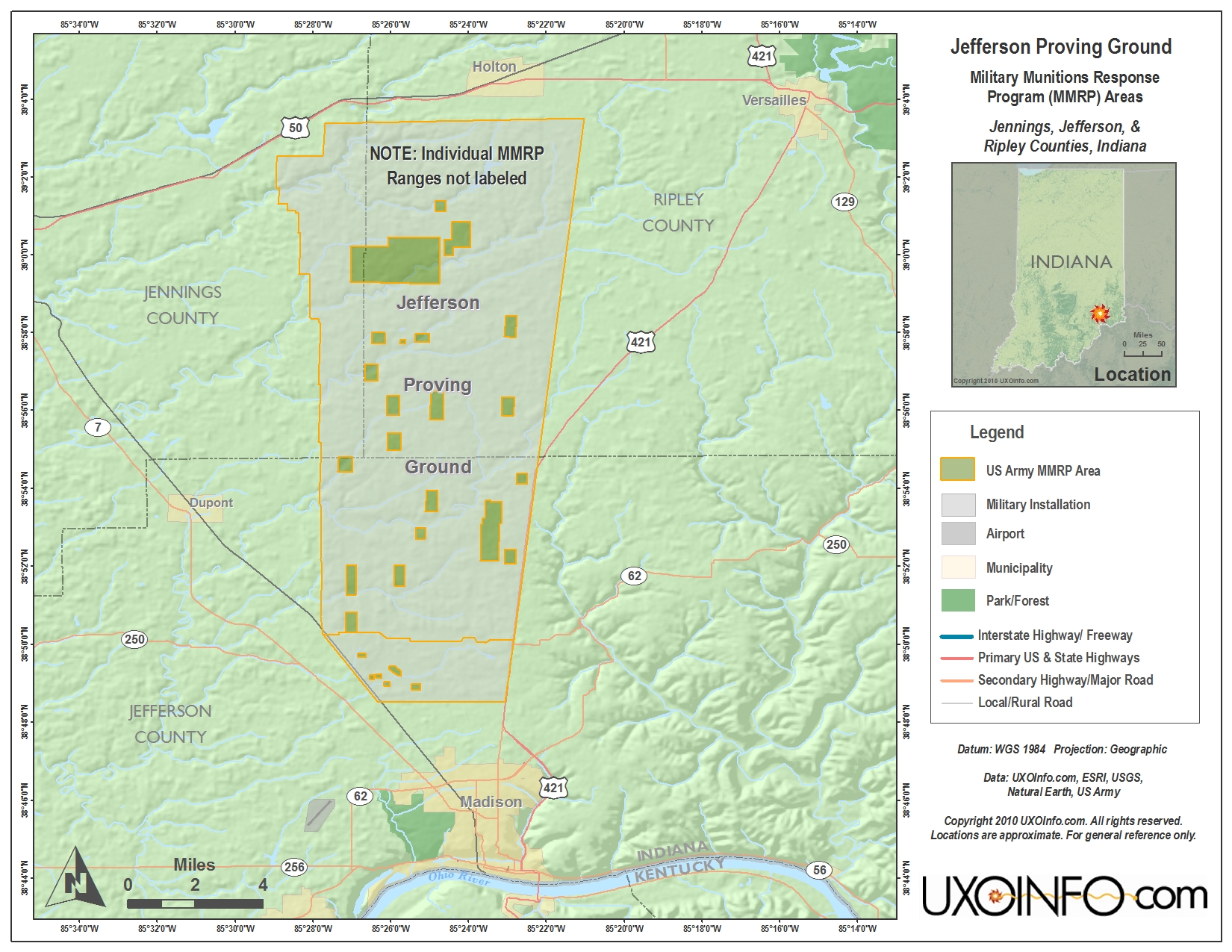The Jefferson Proving Grounds in southern Indiana was used by the Army as a firing range from World War II until the 1990s. Artillery units fired millions of rounds into the range, many with armor penetrating depleted uranium. It is estimated that one and a half million depleted uranium penetrating rods still remain on the surface or in the ground. There may be more than one hundred and sixty thousand pounds of depleted uranium at the JPG. Up to five million conventional shells failed to explode and still have live detonators, primers or fuses. In 1995, the Army stopped using the JPG and moved testing to the Yuma Proving Grounds in Arizona. Depleted uranium has also been used in testing at the Aberdeen Proving Ground in Maryland.
The Army is requesting that the Nuclear Regulatory Commission cancel the Army license for the JPG so that the Army can stop environmental testing at the Proving Ground. The Army issued a decommissioning plan that claims that the two thousand acre "hot zone" in the fifty thousand acres of the JPG is too dangerous to deal with. Their proposed solution is to just fence off the "hot zone" and leave it. They would, of course, post signs that say "Caution, Radioactive Materials."
Local residents are afraid that the deplete uranium from the munitions will leach into the ground water and pollute water from wells in the area. They even say that the shells and rods might be carried off the site by swollen creeks and rivers during heavy rains. Experts point out that the depleted uranium is much less radioactive than the weapons grade uranium and plutonium used in nuclear weapons. They say that depleted uranium corrodes very slowly and it would take decades for the depleted uranium in the JPG to make its way to the water table.
The danger to human health from depleted uranium is still being debated. Apologists for the military use of depleted uranium claim that it poses little danger to health. Critics of nuclear munitions reply that studies indicate that there is no "safe" level of radiation in the environment. One problem with evaluating radioactive threats to health is that it can take decades for radiation damage to manifest in a biological system as cancer and other diseases. Researchers in Iraq say that they are seeing increased numbers of birth defects, cancer and other diseases which they attribute to the use of depleted uranium munitions used during the U.S. occupation of Iraq in places such as Fallujah. Deplete uranium in the dust of these battlegrounds is especially damaging if it is inhaled or ingested.
Opponents to the Army's plans for JPG say that there are no other abandoned military installations in Indiana where environmental testing has been stopped. The Big Oaks wildlife refuge overlaps the proving ground and some parts of it are dangerous for hunters, hikers and campers because of the unexploded ordinance and depleted uranium rods. As is the case with Hanford, it seems that the U.S. military just wants to test weapons and is not particularly concerned about the damage to the ecosystem or the tons of radioactive contamination that they have left behind.
